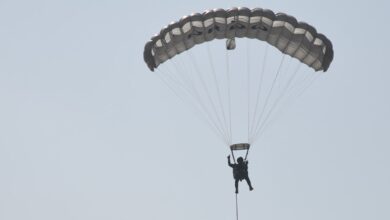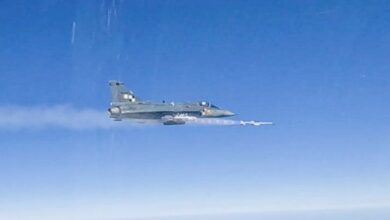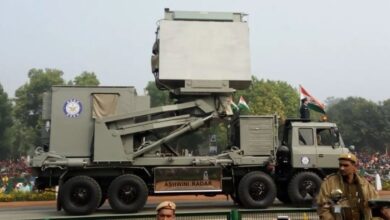India And China Edge Closer To Border War: Aussie Media

(This News Article is originally posted by The Australian)
High in the Himalayas, Indian and Chinese forces have brought troop reinforcements, artillery and armour up to the border, involving more than 100,000 soldiers in the most dangerous confrontation for decades between the Asian superpowers.
With thousands of Chinese soldiers camped on Indian soil and negotiations to defuse the conflict deadlocked, the world’s two biggest militaries are squaring off against one another at altitudes above 5000m as temperatures plunge to minus 40C.
The dispute over the border has escalated this year after 20 Indian troops and an unknown number of Chinese were killed in a bloodbath on the border. The stand-off has raised fears that a miscalculation by either side could tip the world’s two most populous nations — nuclear-armed powers with a joint population of more than 2.7 billion people — into open conflict.
By some estimates, India has conceded more than 250sq km of strategic territory since Chinese troops crossed the disputed mountainous border into Ladakh at several points in May, seizing strategic positions in the Galwan Valley and around Pangong Lake.
At stake is control of the ancient Silk Road passage through the Karakoram Pass, which could open better road access from the Chinese province of Xinjiang into Pakistan, India’s bitter rival. Chinese investments in Pakistan and the trade corridor into Central Asia, worth billions of dollars, are pivotal to President Xi Jinping’s Belt and Road initiative. Hemmed in along its northern borders by the Chinese alliance with Pakistan, India’s grip on Ladakh and the disputed region of Kashmir could be weakened by the Chinese incursion.
“It was an unprecedented step for China to take. Despite its huge economic stake in the Indian economy, they went for this belligerent expansion,” said Phunchok Stobdan, a former Indian diplomat and expert in Indian-Chinese relations. “This is certainly linked to global politics. India may have been a proxy target to hit back at the US, which has taken a more aggressive posture towards China under Trump.”
Caught out by the Chinese offensive, India’s initial response was simply to deny it. Even after 20 Indian troops were killed in an ambush in June, beaten to death with clubs wrapped in barbed wire, Narendra Modi, the Prime Minister, insisted there had been “no incursion” at the border.
Re-elected by a landslide on a national security platform last year, Mr Modi balked at confronting India’s giant northern neighbour, to the fury of the opposition and military, who called for a targeted military counterstrike before China could secure its foothold on Indian soil. Instead, China has fortified its positions inside India with concrete bunkers and expanded bases on its side of the Line of Actual Control (LAC) that divides the region.
India did surprise the Chinese with a counteroffensive in late August, moving thousands of troops on to high ground above the southern bank of Pangong Lake under cover of night, giving them a tactical advantage overlooking the Chinese positions.
As tensions rose further, shots were exchanged in September, the first in four decades, violating a critical no-live-fire accord, imposed since the 1962 Sino-Indian War to avert military escalation along the border.
Under Mr Modi, India has ramped up construction along the border, building roads, tunnels and landing strips that allow Delhi to rapidly deploy troops.
The Chinese foreign ministry has said that the Indian construction drive was the “root cause of tensions”. Yet Beijing has been on a building spree of its own along the border for years, and reacted furiously when India responded. The incursion in Ladakh also fits the pattern of mounting Chinese aggression across Asia, using the cover of the coronavirus crisis to assert its claims of sovereignty throughout the region.
India responded by signing a defence pact with the US and invited Australia, also locked in a diplomatic stand-off with Beijing, to join its naval exercise with the US and Japan in the Bay of Bengal last month.
Defusing the crisis in Ladakh will not be easy. Mutual distrust is entrenched. After another round of negotiations last month failed to agree a mutual withdrawal from the highest strategic positions occupied by the two armies, both are resigned to a logistical race to provide supplies and heating for the troops. What happens next looks likely to depend heavily on China’s next move.
“The Chinese have risked so much in terms of their bilateral relationship with India that it will be difficult to back down,” Lieutenant-General D S Hooda, the former chief of India’s Northern Command, said. “I don’t think India is looking at a military response, at least for now. So we are reaching an extended stand-off that puts bilateral relations between them at stake.”








